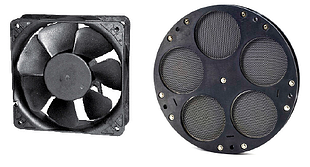If you’re faced with designing a system that requires both heating and cooling capabilities, here are five factors to consider that will enhance the efficiency of your system and create a longer, more reliable service life.
1. The Operating Environment
 This is an obvious design factor, but one which still requires a comprehensive understanding to properly accommodate for the diverse conditions your system will face. This information is the base line for the entire system, so having accurate information is critical; you should know the actual operating temperatures plus any temperature extremes.
This is an obvious design factor, but one which still requires a comprehensive understanding to properly accommodate for the diverse conditions your system will face. This information is the base line for the entire system, so having accurate information is critical; you should know the actual operating temperatures plus any temperature extremes.
You’re always better off to plan for the worst and not be surprised. Besides, a little over-engineering will ensure your system operates as long as you need it to.
2. Size Does Matter
One of the biggest difficulties faced in many systems is getting enough heating and cooling into limited spaces. In fact, this is one of the greatest challenges designers face.
For cooling the solution, it can be as simple as using a higher RPM fan or determining what the optimal fan design is. For heating, it means increasing the amount of heating elements or increasing the power.
3. Available Power
As the heating and cooling requirements increase, so do the power requirements. Upping the power for increased heating and cooling means bigger cabling that is harder to route, and it also creates additional heat with higher power consumption—all of which may have serious implications to your design.
4. Filtration
When you’re moving air, it has to come from somewhere; knowing what elements are in that somewhere is an essential factor. Dust, dirt, moisture, and particulates can wreak havoc on internal components, so you should always conduct a comprehensive study of intake conditions. If you're designing a system that's portable, try to take into consideration every scenario that it might encounter.
5. The Past
If you're designing an upgrade or replacement system, never take for granted that the original design was adequate enough. If possible, look at the service records — by understanding the old system’s performance over time, you can actor in design improvements that will make the new system more robust and reliable. A thoughtful design, optimized using modern components, equates to lower cost over the life of the system.
For more information on heating and cooling systems, visit our online resource library today.






